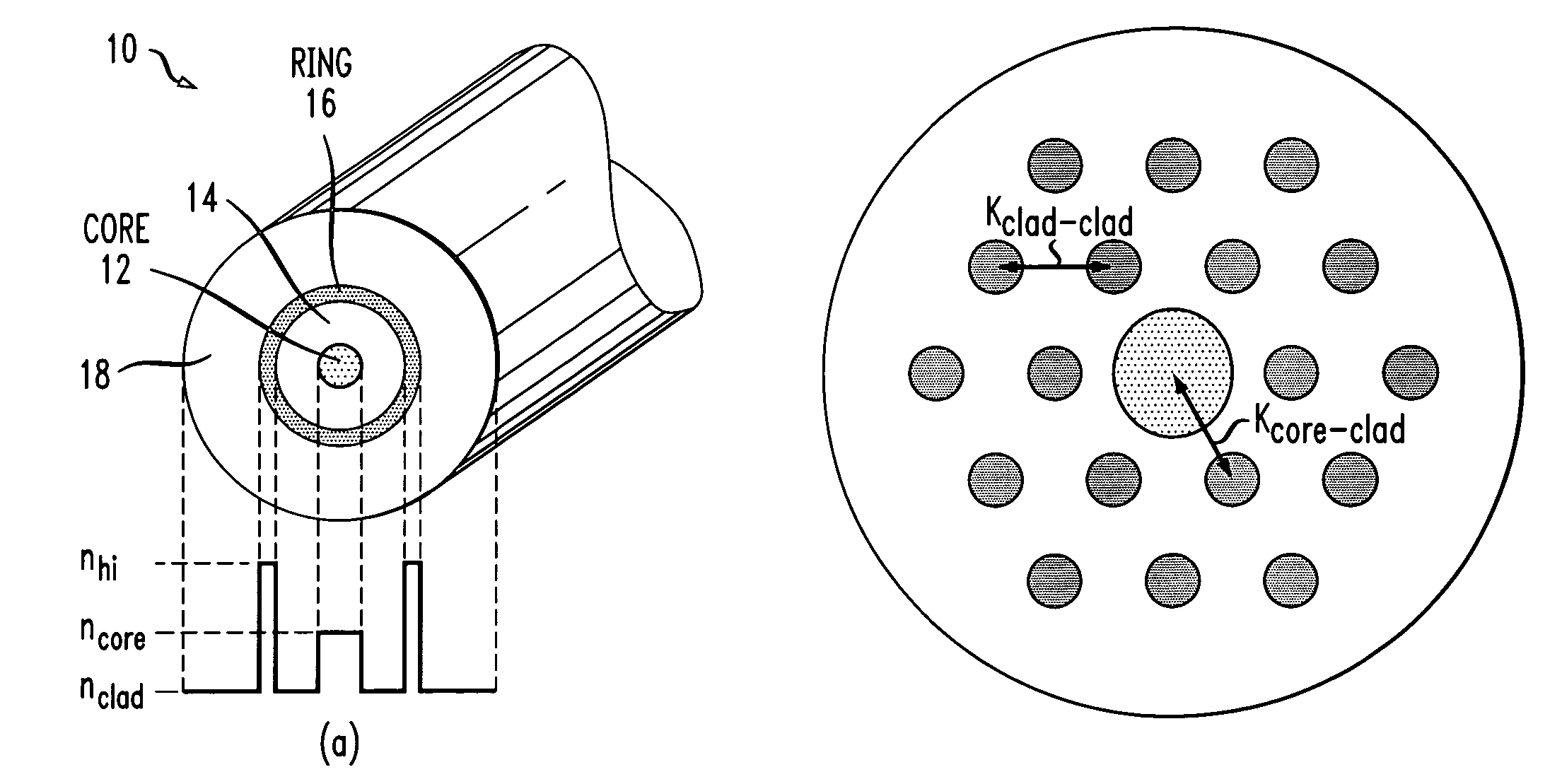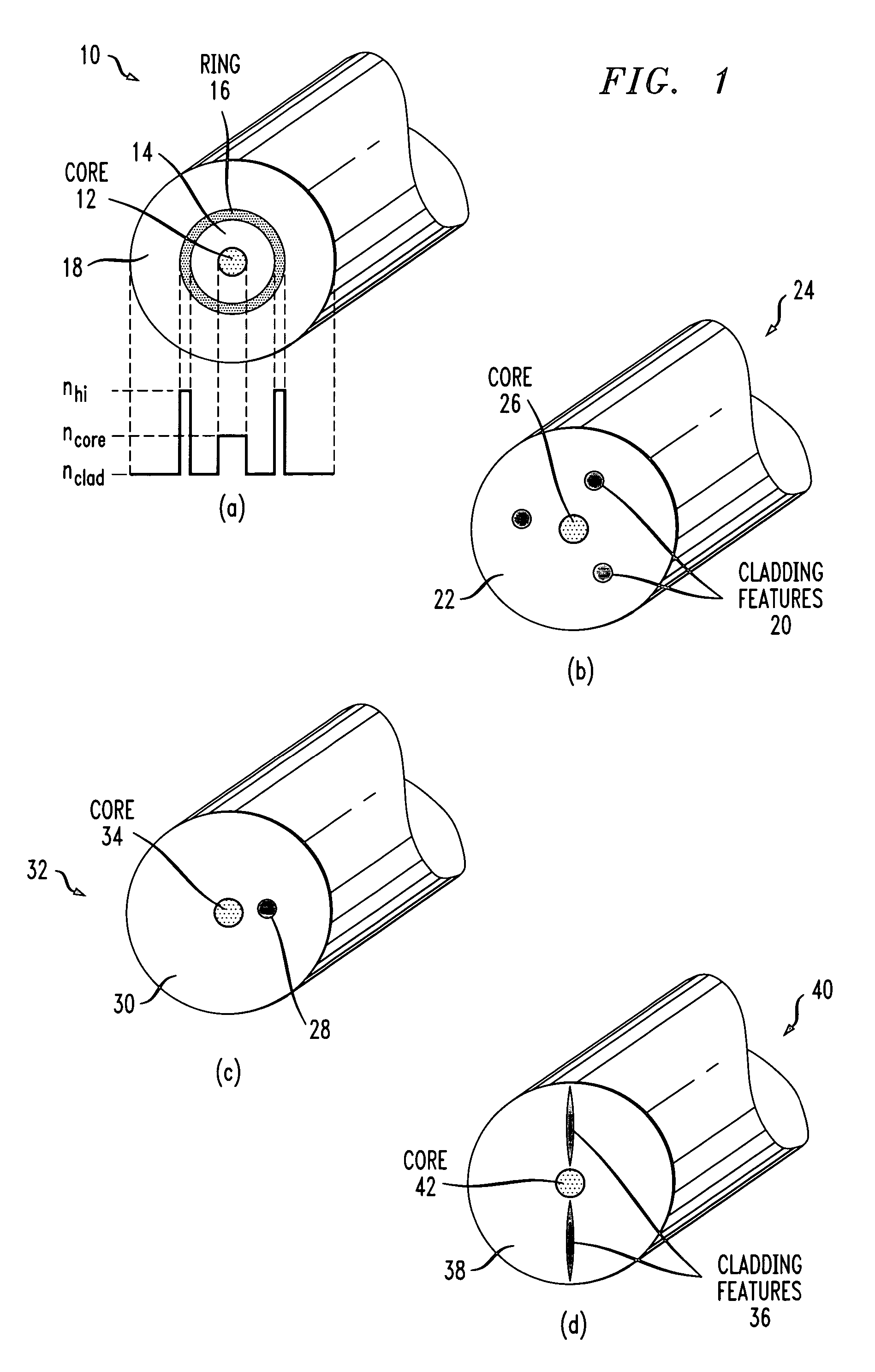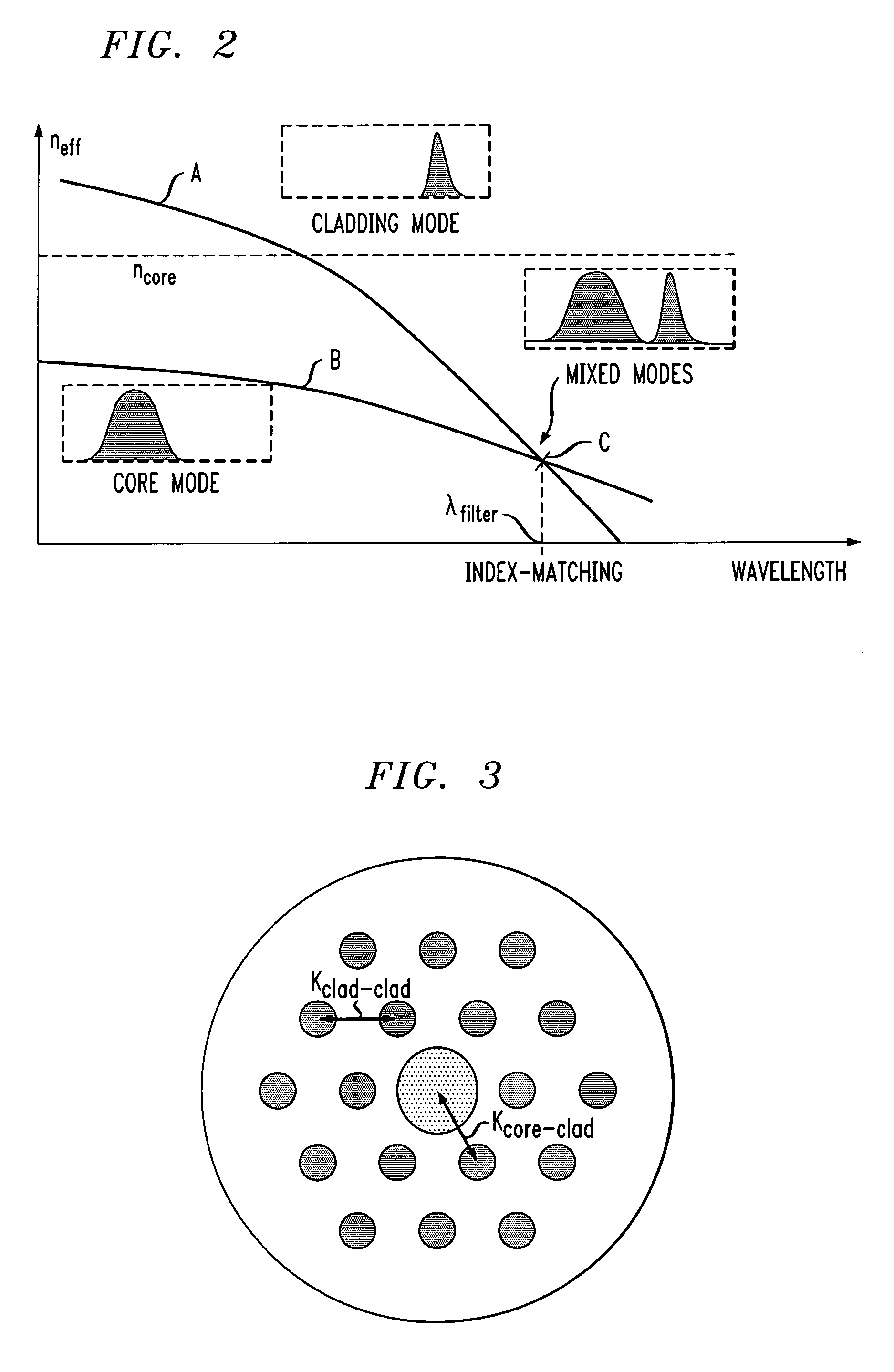Optical fiber filter for suppression of amplified spontaneous emission
an optical fiber filter and amplified spontaneous technology, applied in the field of allfiber optical filters, can solve the problems of affecting system performance, not sufficiently reducing other system impairments, and problematic reflection gratings, and achieve the effect of reducing amplified spontaneous emission
- Summary
- Abstract
- Description
- Claims
- Application Information
AI Technical Summary
Benefits of technology
Problems solved by technology
Method used
Image
Examples
Embodiment Construction
[0018]As mentioned above, there are a variety of different optical systems that can be improved, in terms of performance, by the application of wavelength-selective filtering to the signals propagating along the system optical fiber. In particular, “optical noise” can be reduced by selectively removing signals at certain wavelengths from propagating along the fiber. In accordance with the present invention, an all-fiber optical filter has been developed that exhibits separate cladding modes and core modes in the pass band(s) of interest, but exhibits only mixed core-cladding modes in the stop band(s). Mode mixing leads to reduced overall transmission via reduced gain and / or increased losses within the core region as a result of the signal coupling into the cladding region. An all-fiber filter formed in accordance with the present invention is based upon the following design principles: (1) a raised-index core region that guides light (propagating at desired wavelength(s)) primarily ...
PUM
 Login to View More
Login to View More Abstract
Description
Claims
Application Information
 Login to View More
Login to View More - R&D
- Intellectual Property
- Life Sciences
- Materials
- Tech Scout
- Unparalleled Data Quality
- Higher Quality Content
- 60% Fewer Hallucinations
Browse by: Latest US Patents, China's latest patents, Technical Efficacy Thesaurus, Application Domain, Technology Topic, Popular Technical Reports.
© 2025 PatSnap. All rights reserved.Legal|Privacy policy|Modern Slavery Act Transparency Statement|Sitemap|About US| Contact US: help@patsnap.com



